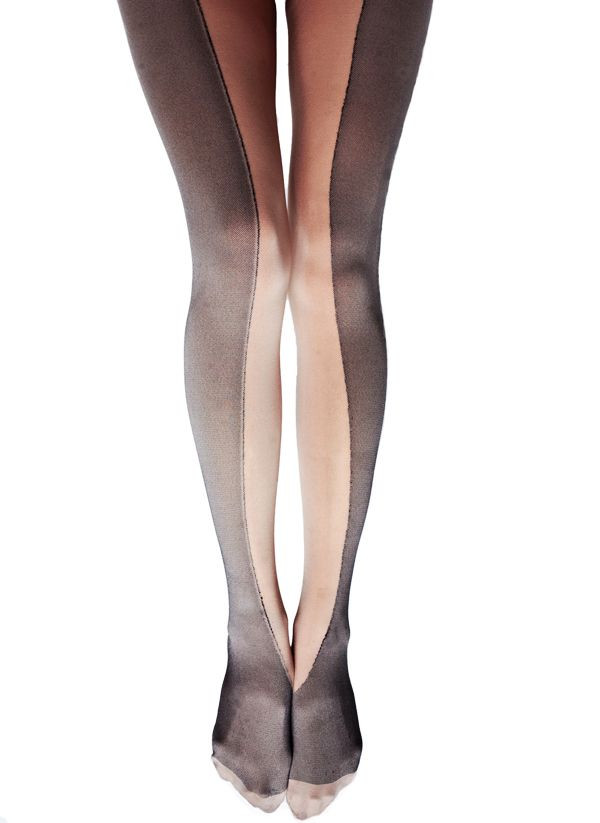Did John Galliano Rip Off A Young Designer's Tights For His Debut Fashion Show In London Fashion Week?

When Beau Rhee, designer for the NYC-based dance-inspired fashion line Atelier de Geste (Atelier of Movement), logged on to Style.com Monday to watch the Maison Margiela fashion show that had exhibited at London Fashion Week a few hours earlier, she was excited to see what one of her favorite couture houses was up to.
The show was also, notably, the debut of John Galliano as head designer for Margiela after an ignominious fall in 2011 when he was fired from Christian Dior after his arrest for hurling anti-Semitic rants at a couple in a Paris café. But Rhee’s excitement soon turned to bafflement. The first model who walked down the Margiela runway was wearing what looked to her like an uncanny replica of her own design featured in her 2013 collection: unusual, two-tone tights she sold on her website, in specialty Urban Outfitters boutiques, and on Cools.com.
Rhee took to Twitter and Instagram to get opinions from her followers. "Blatant knockoff or impossible coincidence?" she wrote, tagging @MaisonMargiela to prompt a response. There was none.
AdG legs kind of day. Just saw the Margiela Artisanal collection that debuted in London ... http://t.co/VxfxhMsUE1 pic.twitter.com/nt6O9AxFhW
- Atelier de Geste (@atelierdegeste) January 13, 2015Ultimately, Rhee hopes for some kind of acknowledgement or credit like the one she received from Pharrell's stylist Shirley Kurata, who found the Atelier tights online, used them in the pop star's video "Marilyn Monroe," and invited Rhee to use screen grabs to promote her line.
Rhee would also like to see a standard in the fashion industry that's similar to sampling in hip-hop: "Could Jay Z get away with sampling the melody of a well-known indie band in a big new single and not pay a royalty or credit in the notes?" she asked.
“To the extent that a design is gratuitous or arbitrary and not part of the function of the clothing or accessory, it may be eligible for a copyright protection,” intellectual property attorney David Korzenik told International Business Times.
He cited a classic case in which Kieselstein-Cord won a copyright case when one of its belt designs was knocked off. But he cautioned that copyright law is often resistant to protecting designs in fashion – especially where they emerge from clothing function or use and its fit to the human body.
“Masion Margiela could show that the idea of using alternate-colored textured panels has been voiced in the industry already, that it’s part of the vernacular,” he said. “Is it just capturing an emergent idea, or is it unique artistic expression? One question you might ask is, to what extent have others done this? You see some similar ideas, the breaking up of panels in different colors, in athletic wear, for example.”
Ultimately, Korzenik says, ”Copyright law must balance protection of individual expression with protection of a rich public domain, and therefore it cannot always address all forms of unfairness. Ideas of one person may inspire others and yet not be compensated. We create things out of a common language and shared culture.”
Although Rhee has spoken to a lawyer to discuss her rights, she said she's wary about starting any legal battles. "I think it is best to approach it more as an opportunity to voice some of these issues of authorship," she said. "Big brands can't keep getting away with taking ideas from individual or small design companies without credit."
Maison Margiela has not responded to requests from International Business Times for comment.
© Copyright IBTimes 2024. All rights reserved.






















